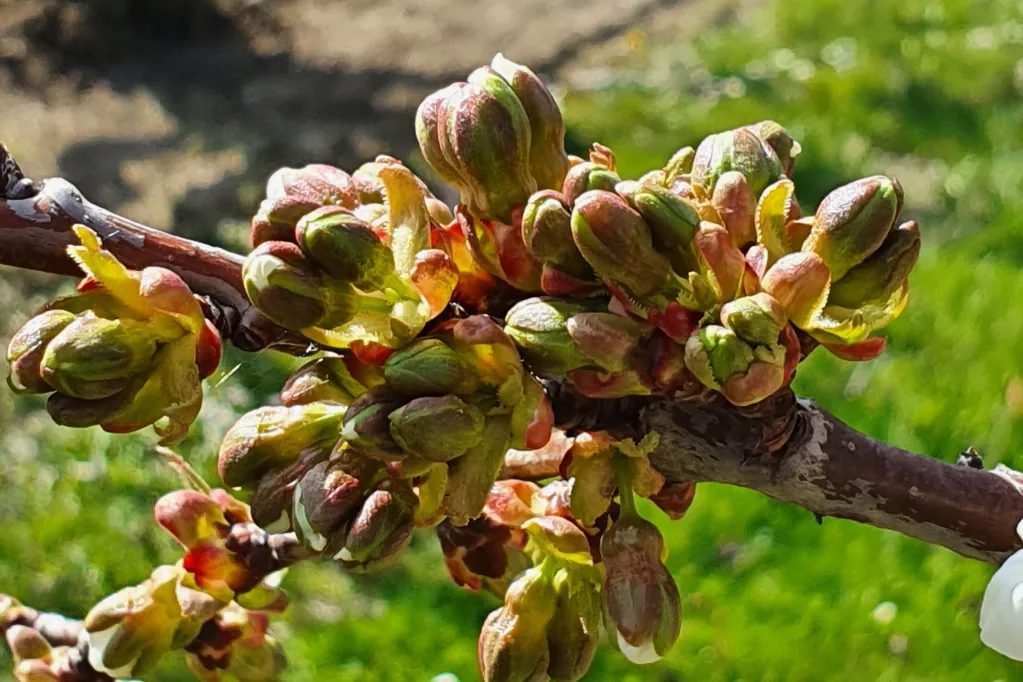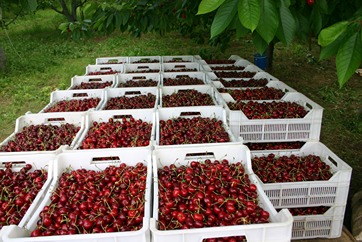In an agricultural context increasingly exposed to climate shocks, cherry cultivation proves to be both a fascinating and complex activity. The Shukin family knows this well, having been involved in farming since 1935 in British Columbia, Canada. After decades dedicated to apple production, the switch to cherries became almost inevitable due to the growing difficulty of maintaining profitability with increasingly scarce apple yields.
However, cherry trees, while promising, are not immune to risks. The sudden frost in January 2024, which severely impacted the entire region, compromised most stone fruit buds, leaving entire orchards without a crop. Shukin Orchards was also hit by this event and forced to face a season with no harvest. Nevertheless, the family did not stop, continuing to invest in knowledge and best practices for the future.
Variety selection
The starting point for any new cherry orchard is variety choice. This must take into account local climatic conditions: sweet cherries, in particular, require a mild climate. Moreover, many cultivars need cross-pollination, so compatible varieties must be carefully paired and planned.
Choosing the right rootstock is also essential, as it affects vigor, soil adaptability, and resistance to stress. Every decision should be tailored to the specific features of the production site.
Soil preparation and nutrition
Well-prepared soil is the foundation of a healthy plant. Soil tests are valuable tools to assess pH, available nutrients, and organic matter. Adding organic material, such as wood chips, improves soil aeration and root development, enhancing both drainage and nutrient availability.
Irrigation and fertigation
To keep cherry trees healthy, irrigation must be consistent and targeted. Drip irrigation is ideal for delivering water directly to the roots. Fertigation – adding nutrients via the irrigation system – simplifies plant nutrition. However, it’s important to precisely calculate flow rate and pressure, and to keep the system efficient by regularly removing residues and cleaning filters.
Pruning and canopy management
Pruning is not just an agronomic operation, but a true strategic management tool. It improves light penetration and air circulation, facilitates harvesting, and reduces the risk of mechanical damage and fungal diseases like powdery mildew. Pruning should be done with sharp tools to avoid plant injury.
Crop protection
Insects and pathogens pose a constant threat to cherries. Ensuring marketable fruit requires following a well-planned treatment calendar. Rotating active ingredients is essential to avoid resistance build-up, maintaining both the effectiveness and safety of plant protection practices.
Harvest and post-harvest
Cherries are extremely delicate fruit that demand great care at every stage of harvest. Skilled workers play a key role in correctly selecting and placing the fruit. Harvesting must occur at peak ripeness. Immediately afterward, hydro-cooling brings down the temperature, ensuring freshness and extending shelf life.
Toward a conscious future
Growing cherries means facing complex challenges with passion, method, and long-term vision. This is demonstrated by the commitment of Alicea Shukin, fourth-generation fruit grower and graduate in horticulture from Olds College of Agriculture & Technology. With her hands-on experience, Alicea represents the new face of resilient agriculture, capable of innovating from the ground up.
Text and image source: fruitgrowersnews.com
Cherry Times - All rights reserved












